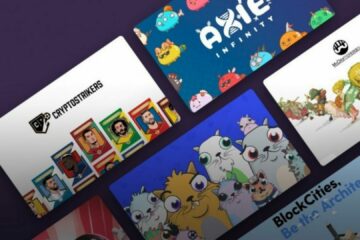NFTs exist in the crypto world as “collectible capsules” – capsules to collect – or as NFT art. Because they are not interchangeable and replaceable, NFT tokens are still viewed as critical. Remember the article in which a journalist wrote about the “nightmare trial” how difficult it can be to get hold of a single NFT token. Not to mention the exorbitant gas prices some have to pay on NFT transactions.
Nevertheless, NFT tokens are penetrating more and more mainstream and do not seem to stop at any area of life. But the more the general public sees the benefits of NFTs, the quieter the critical voices. At this point the question arises as to what this benefit actually consists of. But first, it’s about understanding why NFTs are so valuable to our world.
NFTs in the world of art
The art world is a place in itself. But for NFTs there really isn’t a better one. Because both NFTs and works of art are unique and therefore irreplaceable. Today, NFTs have become an integral part of the art world and often pave the way for emerging artists. But it gets even better: NFTs set a new milestone in the art world, as they no longer allow copyright infringement. The focus is clearly on the security and protection of intellectual property. In principle, anyone can view or copy copyrighted works of art.
If you look at the net income from NFT artwork, it was over $ 9 million at the beginning of the year. Never before has such a large amount of money been converted into digital works of art in a single month. In addition to established artists, emerging artists have also discovered the advantages of NFTs for themselves. Remember the Beeple artwork that sold for a whopping $ 69 million and the NFT art by Rick and Morty that went over the “digital counter” for over a hundred thousand dollars.
And the world’s most famous galleries and auction houses have jumped on the NFT bandwagon with enthusiasm. Just recently, Sotheby’s – a provider of luxury real estate – announced the first NFT art auction, which incidentally was paid entirely in crypto.
These and many other examples show how art is successfully conquering the crypto space. Or the other way around: The entry of crypto into the (digital) art world.
NFTs for Gamers A good match
Since the advent of cryptocurrencies, Bitcoin and Co. have been practically integrated into the games where they can be collected or won. Gamers are therefore very familiar with digital assets and are masters at assessing the real value of an item, especially when it comes to non-exchangeable tokens such as NFTs. They are also professionals at performing digital microtransactions. For example, for the purchase of works of art or other items that can be acquired in the crypto world.
In blockchain-based games, gamers can even own the digital items they buy in-game in real life – provided that NFTs are built into the game. That may sound a bit crazy to one or the other who are new to NFTs. But this development is revolutionary for experienced gamers!
Today there are many partnerships that combine crypto and gaming, such as the one between Atari and Enjin. The aim of this collaboration is to create digital collectibles for gamers that they can keep in their own NFT vault. Minecraft – one of the hottest games of the moment – has also introduced NFTs as a digital possession.
How NFTs are turning the sports world upside down
The sports world is another area where NFTs spread rapidly. Collecting and swapping baseball cards has always been a popular pastime with fans. And NFTs could push the swap into a new dimension!
This will be the case for most NFTs by mid-2021. Memorabilia, Moments, Art … and of course “Digital Bragging” is a term that for the most part describes what you are getting, and that seems pretty accurate.
“Proof of Ownership”
The NFT industry seems to be moving towards “modern” art collection. That’s not necessarily a problem, but NFTs have a lot more to offer, potentially.
A project that takes a completely new approach in this regard is 2Crazy. Watch this video to briefly explain what they do:
Instead of “digital bragging rights” you get a “real experience”
Some readers may still wonder what we are talking about when we say “NFT”. The word is often tossed around but rarely explained adequately. Let us help you …
NFT stands for non-fungible token. Fungibility means mutually exchangeable. Take Bitcoin as an example. It doesn’t matter “which” Bitcoin I have. Your 1 BTC can be replaced with your friend’s 1 BTC – it doesn’t matter which one you have. They are unique digital assets that are authentically certified and based on blockchain technology – the technology that underlies cryptocurrencies like Bitcoin. Every NFT transaction is publicly recorded on a ledger to confirm ownership so you can say, “I am the only person who owns this thing”.
The NFT area is evolving beyond its purview and attracting the attention of a large audience, but is still at an early experimental stage. One area where NFTs have incredible potential is in the metaverse.
The metaverse.
The metaverse is based on the convergence of physical and digital. You and I already have a “digital personality” on social media, but some areas of our lives will eventually take place in virtual spaces.
This is where NFTs can play a major role.
Both NFTs and VR are emerging industries on the verge of major breakthroughs. The combination of these two technologies could lead to a definite synergy. It sounds like a match made in heaven.
This is what Alex Blagirev, Deputy CEO of Sensorium Corporation and the SENSO project, says about the need for NFTs in VR:
Non-fungible tokens (NFT) reached their first high point with the auction of the Beeple digital artwork Everdays: The first 5,000 Days for 69.3 million US dollars at Christie’s auction house. Until then, it was mainly unknown artists who had offered their digital pictures for sale on marketplaces such as OpenSea or Superrare. This market still exists and is constantly developing. The likelihood of making tens of thousands of euros or ethers with simple digital products, however, decreases with each passing day – at least for those who are not prominent.
Now the superstars and mega brands are coming
The superstars took over the field within a few months. The world’s most famous artists, with millions of followers on Instagram and Co., are now capturing the full attention of the NFT industry. No matter if exceptional footballer Lionel Messi, No. 1 DJ David Guetta or gossip celebrities like Paris Hilton: they are all part of NFT projects. Even the largest corporations in the world, such as Coca-Cola or Visa, are invested in the NFT sector or use it for their own promotional campaigns.
More and more people understand that a completely new value chain is opening up. All people and brands with a certain reach can generate enormous additional income as a result. Nevertheless, little is likely to change in terms of market shares. The most valuable brands and the most famous stars also make the most money. The advertising market is only the tip of the iceberg. In the long term, it’s about nothing less than transforming the analog world into the digital one. These can be material things such as items of clothing, property or cars, but also immaterial objects such as patents or licenses. In addition, digital content such as social media accounts or internet domains can already be embodied via non-fungible tokens.



0 Comments